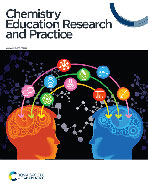Development of the Chemistry Mindset Instrument (CheMI) for use with introductory undergraduate chemistry students
Abstract
Chemistry education research has increasingly considered the role of affect when investigating chemistry learning environments over the past decade. Despite its popularity in educational spheres, mindset has been understudied from a chemistry-specific perspective. Mindset encompasses one's beliefs about the ability to change intelligence with effort and has been shown to be a domain-specific construct. For this reason, students’ mindset would be most relevant in chemistry if it were measured as a chemistry-specific construct. To date, no instrument has been developed for use in chemistry learning contexts. Here we present evidence supporting the development process and final product of a mindset instrument designed specifically for undergraduate chemistry students. The Chemistry Mindset Instrument (CheMI) was developed through an iterative design process requiring multiple implementations and revisions. We analyze the psychometric properties of CheMI data from a sample of introductory (general and organic) chemistry students enrolled in lecture courses. We achieved good data-model fit via confirmatory factor analysis and high reliability for the newly developed items, indicating that the instrument functions well with the target population. Significant correlations were observed for chemistry mindset with students’ self-efficacy, mastery goals, and course performance, providing external validity evidence for the construct measurement.


 Please wait while we load your content...
Please wait while we load your content...
